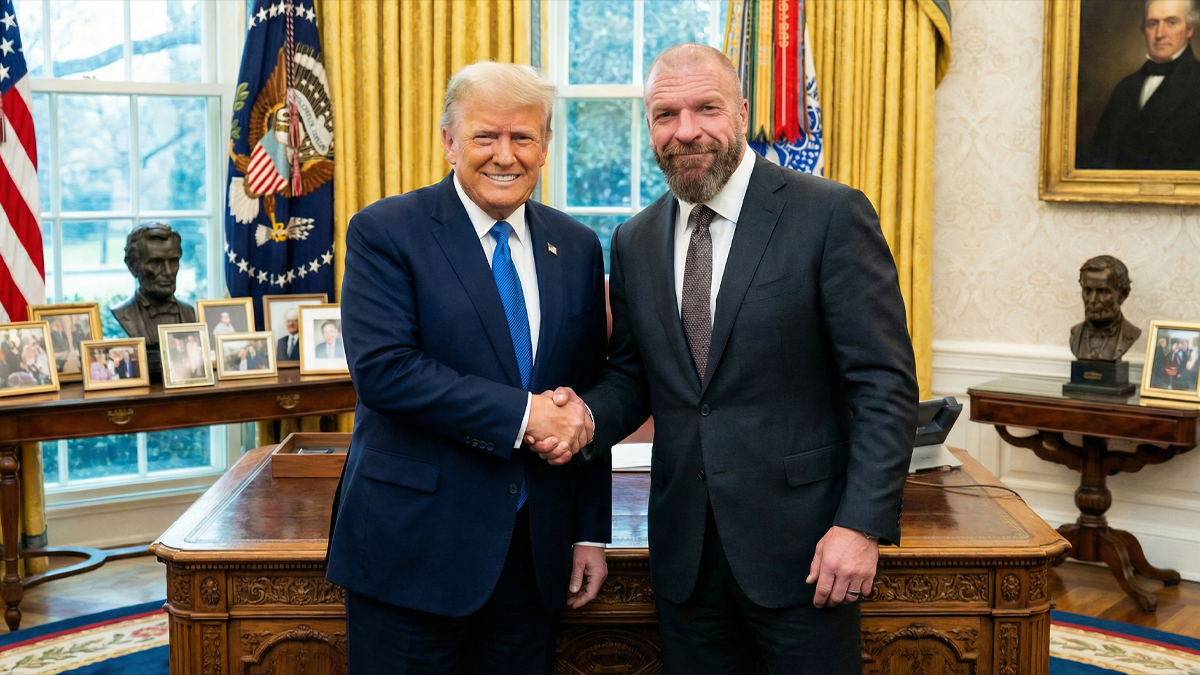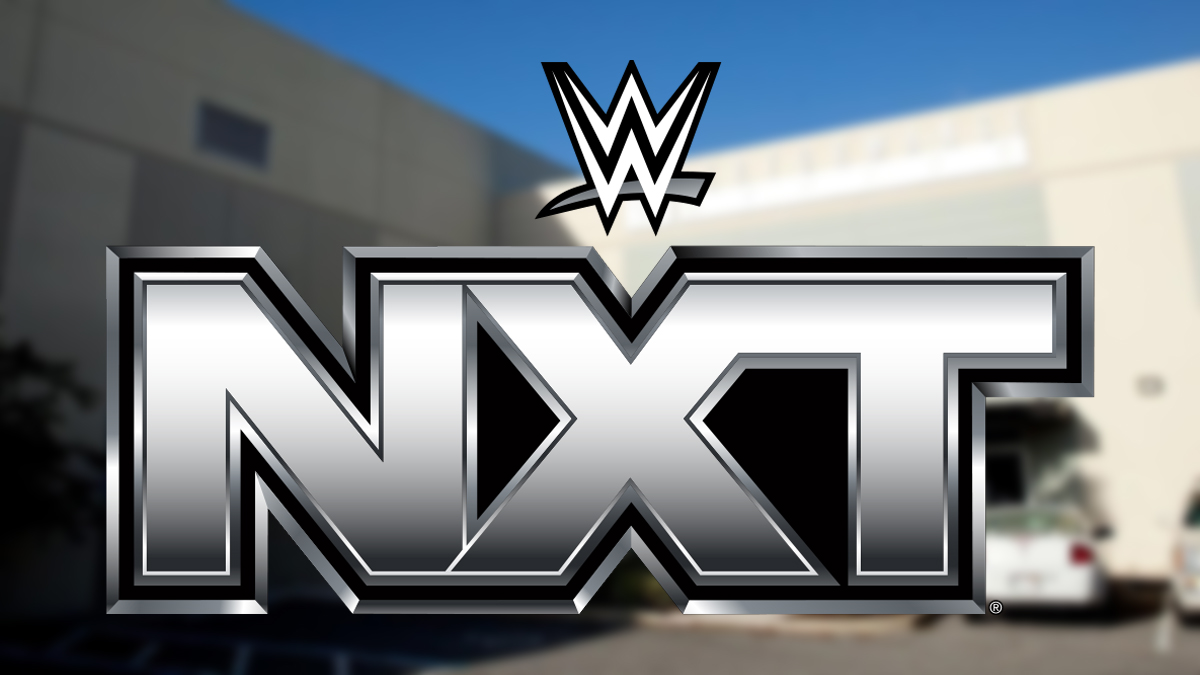Viewers of A&E’s series WWE’s Most Wanted Treasures have seen the vast amount of memorabilia that the company has in its possession – with the concept of the show that the collection grows bigger every week. In the past, the company has eschewed the idea of creating a physical museum or a Hall of Fame exhibition. That thinking may be changing, according to statements made by WWE President Nick Khan during the company’s annual stockholder meeting.
“When I came here full-time nine months ago, one of the first things Vince (McMahon, WWE Chairman and CEO) said to me ‘Did you know we have a 250,000 square foot warehouse just down the street from here that has nothing but WWE memorabilia in it?’ I went to go see it, and it’s astonishing,” said Khan, in response to a question submitted by an anonymous shareholder.
“The number of valuable items that are here, that we own, that show the history of this great company over the last four to five decades. It’s certainly one of the reasons we created the show on A&E. It’s certainly a reason to create a physical Hall of Fame or museum. One of the benefits from all of this memorabilia is that we can rotate the memorabilia if we were to ever do that. With the goal of, instead of going to a Hall of Fame type environment once every five years, maybe if there’s new, fresh memorabilia in there, you’ll go once every five months. We’ll take a look at it now. We’re excited about the possibilities.”
That may have been the only true curveball in the call, which was otherwise fairly routine in terms of its content and execution.
Vince started the call with some introductory comments about the way the company adapted to the COVID-19 pandemic, noting that he was “pleased with the creative way we responded, operationally and financially” to the challenges it presented. He said the situation offered a chance to reimagine the company in every respect, and to take advantage of new opportunities in every business area, which has WWE “posed for more global success and growth than ever.”
Khan touted the return of live events, starting with the recently-announced 25-city tour that starts in July.
“The first three events went on sale yesterday,” he noted, “and all three are almost all sold out. We are excited to re-engage our fans in person.”
In addition to live event, the company is focused on expanding its online and streaming offerings, including seeking partners in other countries to distribute the WWE Network, similar to its deal with Peacock in the United States. He opined that WWE’s historical content library and its ability to produce live content make them a potential boon to any company looking to expand its offerings to customers.
“The marketplace is willing to pay a premium for live content,” he said, citing recent deals within the industry, like the recent acquisition by Amazon of the rights for digital distribution of the NFL. “We believe that WWE stands to benefit from this bigger pool of bidders.”
Chief Financial Officer Kristina Salen was the last formal presenter, and she talked about the company’s record-breaking revenue and profits in 2020, repeating her comments from the past few quarterly meetings and attributing much of that to higher rights fees for content distribution of RAW and Smackdown, coupled with concerted cost-cutting efforts.
Salen also listed major sponsors and advertising partners that the company entered into arrangements with recently, such as Coca-Cola, Cricket, Hyundai, and Mars, who were among the 14 blue-chip advertising partners for this year’s WrestleMania. And noted that multi-year partnerships with Constellation Beer, Credit One, and Draft Kings offer ongoing “contractual versus transactional sources of revenue.”
Other routine business tended to during the call were the election of the company’s directors for the next year, the appointment of Deloitte & Touche as the company’s auditors, and the approval of the company’s Executive Compensation Program.
The Q&A portion of the call included further details on the above, Khan’s aforementioned comments on a physical Hall of Fame / Museum, and a few other tidbits. Here are a few highlights:
- Khan emphasized the huge importance of holding live events in front of audiences again, not only for the revenues associated with ticket and merchandise sales, but also because “our audience is the direct feedback of our product. They provide that feedback on a second-to-second, minute-to-minute basis. We’re bullish on this, we think this is going to do big business, and we’re excited to see people back in the seats.”
- While there is still some uncertainly as to when international events can be held again, the company is looking forward to this with much anticipation. “There is no date solidified, but we stay in touch with the (Saudi Arabian government) on an almost day-to-day basis,” Khan said, noting that live events are opening up in that country soon. “We want to see when the Canadian border opens up so we can have events there. We want to see when the UK will open up. We’re excited about all that.”
- Salen provided a little more detail about the Peacock deal, noting that WWE receives payment for the distribution rights every quarter, with annual increases. The first of the payments was received and recognized in the first quarter of 2021, but investors looking at Q1’s results should be aware that the first quarter’s payment will differ from the rest of the year, since it reflects one-time adjustments related to the valuation of the WWE Network subscribers delivered to Peacock through the deal and the valuation of the historical content library.
- Chief Brand Officer Stephanie McMahon brought up the zombies who appeared at WrestleMania Backlash, citing that as an example of a successful “custom content experience” that WWE is uniquely-capable of offering to advertising partners (in that case, the Netflix zombie movie Army of the Dead). “It was an integration unlike anything anybody has ever been able to do before,” she said in what some might call an understatement. Another successful campaign she mentioned was the deal with Old Spice that saw the creation of a new, customized WWE Superstar, “called the Night Panther, which was of course, fictitious, but played out across our digital and social platforms, including WrestleMania.”
- In response to a question about whether WWE must cede any creative control to its network partners, Khan said that they work collaboratively and have constant communication with both Peacock and Fox. “We’re in touch with (NBC Universal and Fox) three to five times a week. All of these conversations (are done) in the spirit of partnership. What dates we feel work best for us; how we can announce things together; what Superstars are going to be on each platform. All of that being said, we retain complete creative control. But we always want to do things that will make our partners happy.”
- Salen was asked if there had been any thought of selling the WWE to Comcast, given their close ties to NBC Universal through the Peacock deal and RAW airing on USA Network. While there doesn’t appear to be any thoughts of doing so, she said that the company is always open to discussion where it makes economic sense. “Our brand has tremendous value. While we believe we’re best-positioned to maximize that value, we’re always open to evaluating opportunities as they come about, especially if they can provide a favourable economic return.”
- All Elite Wrestling was name-checked in a question as to whether competition from other promotions has had any impact on the structure or level of talent pay. Paul “Triple H” Levesque, the company’s Executive Vice-President of Global Talent, Strategy & Development deftly provided a non-answer, saying that “the competition for talent extends well beyond just similar forms of entertainment to us. Whether it be the Olympics, NFL, NBA, everything is out there. For our Superstar talent, we’ll always reflect our drive to strengthen our creative, our base, while maintaining financial discipline.”




